AP POLYCET 2024 Question Paper (Set D) is available for download here. State Board of Technical Education and Training, Andhra Pradesh conducted AP POLYCET 2024 on April 27. Candidates were asked 120 MCQs from Mathematics (60 questions), Physics (30 questions), and Chemistry (30 questions). A total duration of 120 minutes were given to the candidates to complete the AP POLYCET 2024 Question Paper.
AP POLYCET 2024 Question Paper with Answer Key PDF (Set D)
| AP POLYCET 2024 Question Paper with Answer Key | Check Solution |

SECTION-1 : MATHEMATICS
Question 1:
The pair of linear equations \( a_1x + b_1y + c_1 = 0 \) and \( a_2x + b_2y + c_2 = 0 \) has a unique solution, then
Nimra went to a bank to withdraw Rs.2,000. She asked the cashier to give her Rs.50 and Rs.100 notes only and she got 30 notes in all. How many notes of Rs.50 and Rs.100 respectively that she received?
View Solution
If 2 is a root of the equation \( x^2 - px + q = 0 \) and \( p^2 = 4q \), then the other root is:
View Solution
The ratio of the sum and product of the roots of the quadratic equation \( 7x^2 - 12x + 18 = 0 \) is:
View Solution
If the area of a rectangle is 112 m\(^2\) and its length is 6 m more than the breadth, then the breadth of the rectangle is:
View Solution
Find the 10th term of the arithmetic progression 5, 1, -3, -7,...
View Solution
The sum of first 10 terms of the arithmetic progression 34, 32, 30, .... is:
View Solution
The 12th term of the geometric progression (G.P.) \( 2, 1, \frac{1}{2}, \frac{1}{4}, \frac{1}{8}, \dots \) is:
View Solution
Which of the following is a geometric progression?
View Solution
The coordinates of the point \( P \) which is equidistant from the three vertices of the triangle \( \triangle AOB \) as shown in the figure is:
View Solution
In what ratio the Y-axis divides the line segment joining the points \( P(-4, 2) \) and \( Q(8, 3) \)?
View Solution
If the centroid of a triangle formed by the points \( (a, b) \), \( (b, c) \), and \( (c, a) \) is at the origin, then \( a^3 + b^3 + c^3 \) is:
View Solution
If the points \( (1, 2) \), \( (-1, k) \), and \( (2, 3) \) are collinear, then the value of \( k \) is:
View Solution
If the slope of the line joining the points \( (4, 2) \) and \( (3, -k) \) is -2, then the value of \( k \) is:
View Solution
In the following figure, if \( DE \parallel BC \), then \( x = \):
View Solution
In \( \triangle ABC \sim \triangle DEF \), the area of \( \triangle ABC = 9 \, cm^2 \) and the area of \( \triangle DEF = 16 \, cm^2 \). If \( BC = 2:1 \, cm \), then \( EF = \dots \)
View Solution
In \( \triangle ABC \), \( DE \parallel BC \), \( \frac{AD}{DB} = \frac{3}{5} \) and \( AC = 5.6 \, cm \), then \( AE = ? \)
View Solution
In the given figure, PA and PB are the tangents to the circle with center at O. If \( \angle APB = 36^\circ \), then \( \angle AOB = \):
View Solution
The area of the shaded region in the given figure is:
View Solution
In the given figure, the radius of each outer circle is \( a \), then the radius of the inner circle is:
View Solution
If the length, breadth and height of a cuboid are 8 cm, 3 cm and 4 cm respectively, then the total surface area of the cuboid is:
View Solution
If the volume of a cylinder is \( 500 \, m^3 \) and the area of its base is \( 25 \, m^2 \), then its height (in meters) is:
View Solution
If \( \sec\theta + \tan\theta = k \), then \( \sec\theta - \tan\theta\) = ?
View Solution
If \( \sin \alpha + \sin \beta + \sin \gamma = 3 \), then \( \cos \alpha + \cos \beta + \cos \gamma = \dots \)
If \( \tan 48^\circ \cdot \tan 23^\circ \cdot \tan 42^\circ \cdot \tan 67^\circ = \tan(A + 30^\circ) \), then the value of \( A \) is:
View Solution
If \( a \sin 45^\circ = b \csc 30^\circ \), then the value of \( \frac{a^4}{b^4} \) is:
View Solution
If \( \sin^2 \theta + \csc^2 \theta = 6 \), then \( \sin \theta + \csc \theta = \dots \)
View Solution
A tree is broken by wind, its upper part touches the ground at a point 10 meters from the foot of the tree and makes an angle of 45° with the ground. Then, what is the entire height of the tree?
View Solution
If two towers of heights \( h_1 \) and \( h_2 \) subtend angles of 30° and 60° respectively at the midpoint of the line joining their feet, then the ratio of \( h_1 : h_2 \) is:
View Solution
If the probability of guessing the correct answer to a question is \( \frac{x}{12} \) and the probability of not guessing the correct answer is \( \frac{5}{8} \), then the value of \( x \) is:
View Solution
A box contains 24 balls of which \( x \) are red, \( 2x \) are white, and \( 3x \) are blue. A ball is selected at random. What is the probability that the selected ball is not red?
View Solution
Two dice are thrown at the same time. What is the probability that the sum of the two numbers appearing on the top of the dice is more than 10?
View Solution
2 cards of hearts and 4 cards of spades are missing from a pack of 52 cards. A card is drawn at random from the remaining pack. What is the probability of getting a black card?
View Solution
The average of the observations 10, 20, 65, 102, 108, 115 is:
View Solution
If 35 is removed from the data \( 30, 34, 35, 36, 37, 38, 39, 40 \), then the median increases by:
View Solution
The modal class of the following frequency distribution is:
View Solution
If the mode and mean of a data are 24 and 60 respectively, then the median of the data is:
View Solution
The upper limit of the median class of the following frequency distribution is:
View Solution
\( \frac{140}{210} \) is a:
View Solution
The remainder when the square of any prime number greater than 3 is divided by 6 is:
View Solution
Which of the following statements is not correct?
View Solution
The HCF of 306 and 657 is:
View Solution
The value of \( \log_2 32 \) is:
View Solution
If \( A = \{1, 2, \{3, 4\}, 5\} \), then which of the following is incorrect?
View Solution
If A and B are the two sets containing 3 and 6 elements respectively, then what can be the maximum number of elements in \( A \cup B \)?
View Solution
The number of subsets of the set \( A = \{p, q\} \) is:
View Solution
Which of the following is a polynomial?
View Solution
If \( \alpha \) and \( \beta \) are the zeroes of the polynomial \( f(x) = 6x^2 + x - 2 \), then the sum of the zeroes is:
View Solution
If the zeroes of the quadratic polynomial \( ax^2 + bx + c \) (where \( c \neq 0 \)) are equal, then:
View Solution
If \( \alpha, \beta, \gamma \) are the roots of \( 4x^3 - 6x^2 + 7x + 3 = 0 \), then the value of \( \alpha\beta + \beta\gamma + \gamma\alpha \) is:
View Solution
SECTION-II:PHYSICS
Question 51:
Formation of dew and fog is due to the process of:
40 g of water at 40°C is added to 10 g of water at 80°C. The final temperature of the mixture is:
View Solution
A light ray bends away from normal when it travels from:
View Solution
If \( v_1 \) and \( v_2 \) are the speeds of light in the two media of refractive indices \( n_1 \) and \( n_2 \) respectively, then:
View Solution
The speed of light in vacuum is \( c \). The speed of light in a medium of refractive index \( \frac{4}{3} \) is:
View Solution
The stars appear twinkling. The principle involved in it is:
View Solution
A rectangular tank of depth 4 m is full of water of refractive index \( \frac{4}{3} \). When viewed from the top, the bottom of the tank is seen at a depth of:
View Solution
A convex lens gives a virtual image when the object is placed on the principal axis at:
View Solution
Irrespective of the position of the object on the principal axis, a concave lens always forms an image of nature:
View Solution
The lens which is bounded by one-curved surface is:
View Solution
If 25 cm each is the object and image distances due to convex lens, then its focal length is:
View Solution
The angle between paraxial rays and principal axis is:
View Solution
Splitting of white light into VIBGYOR colours is called:
View Solution
The light which has the maximum angle of deviation is:
View Solution
Blue colour of the sky is due to the scattering of light by the atmospheric molecules of:
View Solution
The power of a lens of focal length 20 cm is:
View Solution
In hypermetropia defect, the image is formed:
View Solution
For a normal human-eye, 2.5 cm is the distance between:
View Solution
In old age, the value of least distance of distinct vision shifts to:
View Solution
Electric power is the product of current and:
View Solution
Three resistors each of 4 \(\Omega\), 0.4 \(\Omega\), and 0.04 \(\Omega\) are connected in series combination. Their equivalent resistance is:
View Solution
Pick the correct answer from the following two statements:
View Solution
6 watt \(\times\) second =
View Solution
The relationship between current and voltage is established by the scientist:
View Solution
The electrical energy (in kWh) consumed in operating a bulb of 40 W for 5 hours a day in a month of 30 days is
View Solution
Which of the following is not a measuring function of a multimeter?
View Solution
If \( R \) is the resistance of a conductor of length \( l \), then:
View Solution
Two currents 3 mA and 5 mA are flowing towards the junction in a circuit and three currents 1 mA, 1.5 mA, and \( x \) are flowing away. The value of \( x \) (in mA) is:
View Solution
1 tesla =
View Solution
The phenomenon of electromagnetic induction involves the process of
View Solution
If \( \Delta \Phi \) and \( \Delta t \) are the change in magnetic flux and time respectively, then the induced EMF is:
View Solution
A freely suspended needle of a magnetic compass comes to rest along the geographic.
View Solution
An increase in magnetic flux through a coil of 100 turns in 0.1 s is 0.001 Wb. The maximum induced EMF generated in the coil is:
View Solution
The magnetic force acting on a moving charge in a magnetic field is the product of three quantities namely:
View Solution
An auto driver started an auto rickshaw with the help of pulling a rope. The device used by him to convert mechanical energy into electrical energy is:
View Solution
Faraday's laws of electromagnetic induction is a consequence of:
View Solution
The C.G.S. unit of heat energy is:
View Solution
If \( 27^\circ C + x = 300 \, K \), then the value of \( x \) is:
View Solution
The pair of substances which have the same value of specific heat is:
View Solution
During the process of conversion from liquid to solid, the internal energy of the water:
View Solution
SECTION-III:CHEMISTRY
Question 91:
1s² 2s² 2p⁶ 3s² 3p⁶ (2,8,8) configuration is related to
(1) P³⁻
(2) Cl⁻
(3) S²⁻
(4) All of these
Lithium, sodium, and ______ are Doberiener's triads.
View Solution
IV A group elements are called:
View Solution
An element X belongs to 2nd group and 3rd period. What is its valency?
View Solution
Valence Bond Theory was proposed by:
View Solution
Identify the correct statement.
View Solution
An element \( X^{27} \) forms ionic compound. What is the charge on \( X \) in ionic compound?
View Solution
Linus Pauling proposed the concept of:
View Solution
Electronic configuration of O\(^{-2}\) ion is
View Solution
The number of electrons gained by non-metallic element is equal to its
View Solution
Reactivity increasing order of the following metals will be
View Solution
Poling process is used to
View Solution
Corrosion of silver results in the formation of
View Solution
During corrosion, a metal will
View Solution
Replacing one hydrogen from \( NH_3 \) by alkyl group will result in the formation of
View Solution
What is the structural formula of simplest ketone?
View Solution
Ethene and ethyne differ in the
View Solution
Identify the dimethyl ether.
View Solution
Saturated hydrocarbons contain
View Solution
Aliphatic hydrocarbons are
View Solution
Which one of the following can be used as acid-base indicator to detect acidic or basic nature of solution?
View Solution
If pH of rain water is less than ____, then it is called acid rain.
View Solution
Tooth enamel is made up of
View Solution
What do you observe on pouring potassium hydroxide on red and blue litmus papers?
View Solution
The maximum number of electrons in M shell is
View Solution
Which of the following orbitals does not exist?
View Solution
Niels Bohr received Nobel Prize in
View Solution
The number of degenerate orbitals present in 4d subshell is
View Solution
The number of electrons in the valence shell of an element is called its
View Solution
Strong ionic bond is formed between \underline{\hspace{2cm and \underline{\hspace{2cm group elements.
View Solution
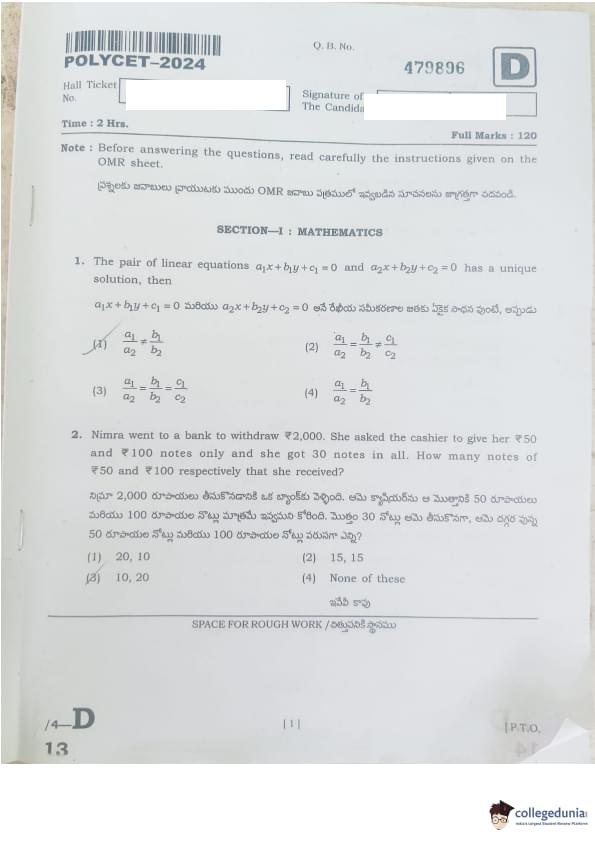
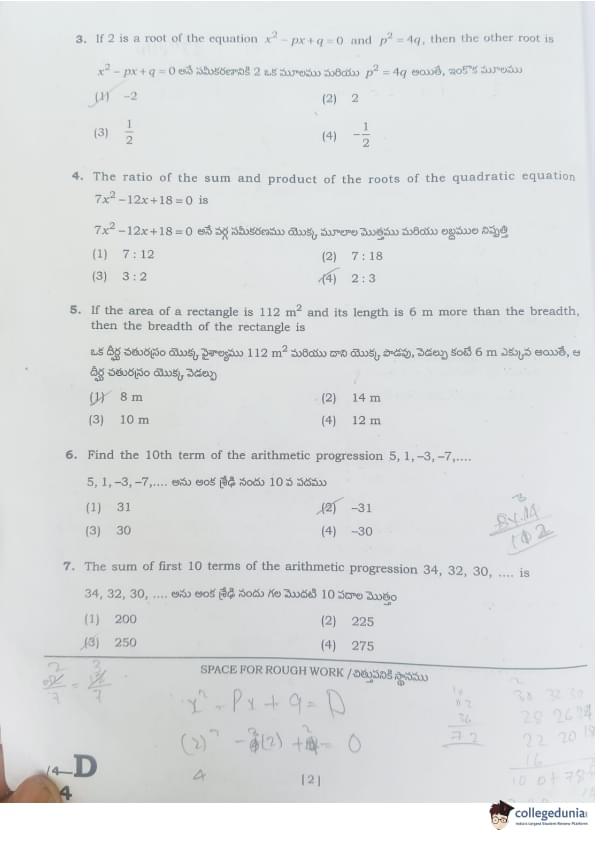
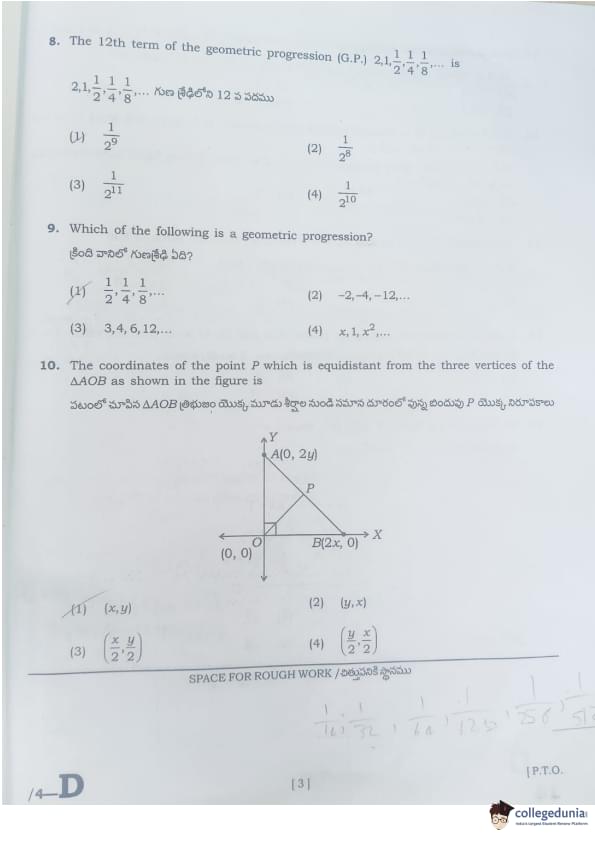
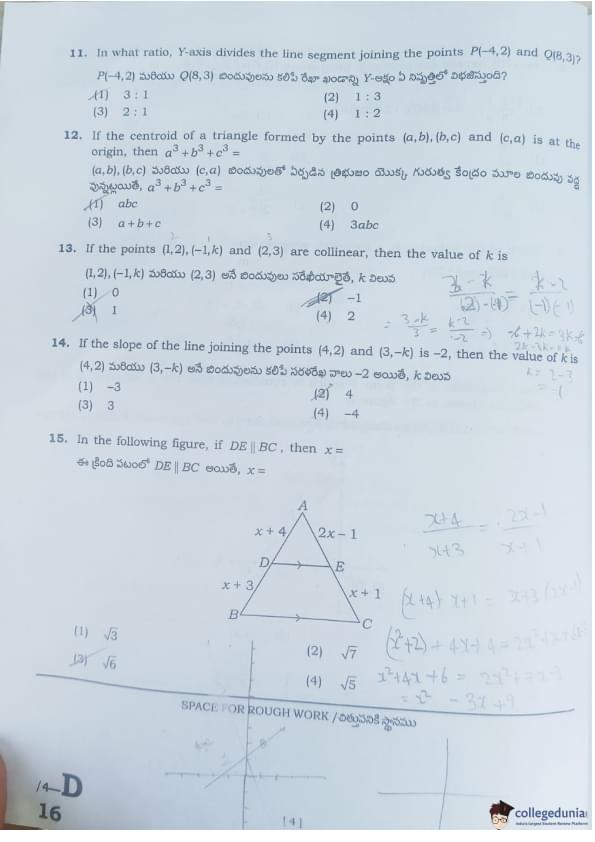
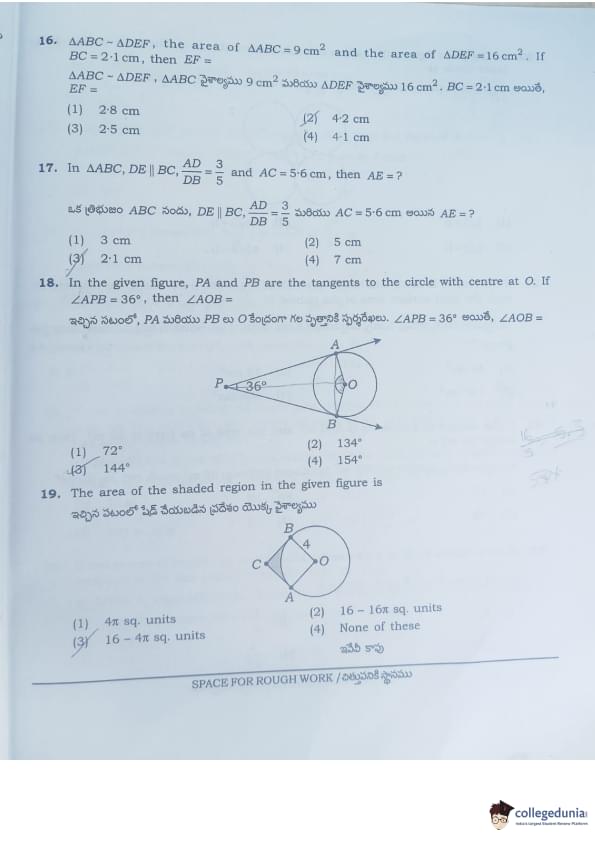
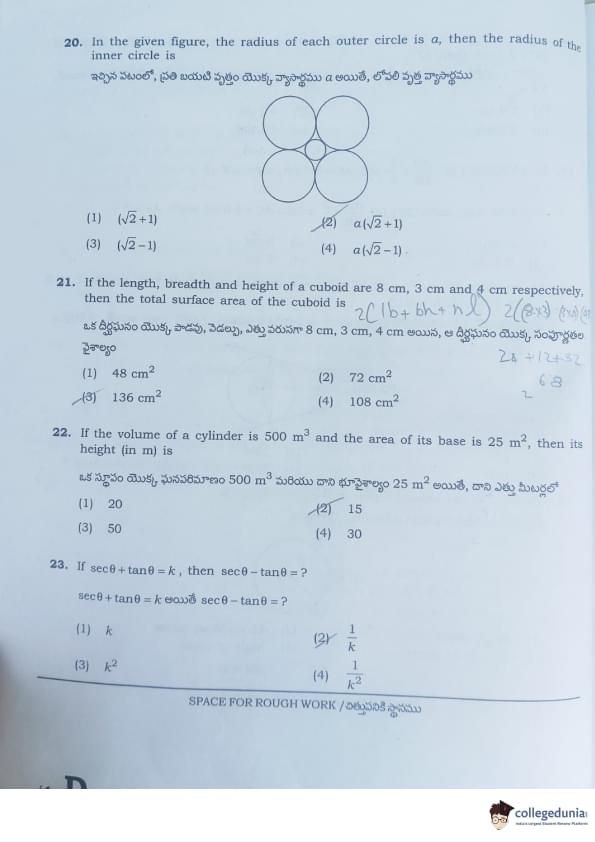
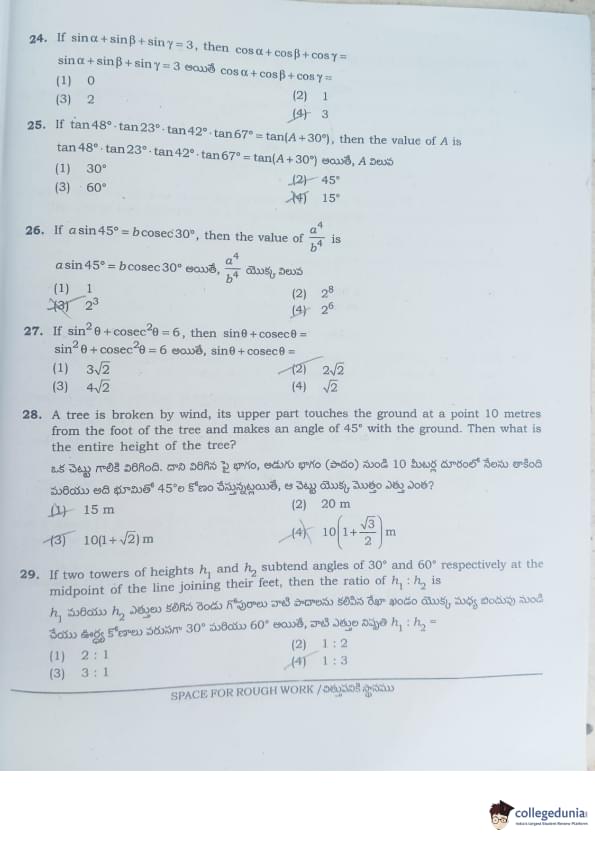
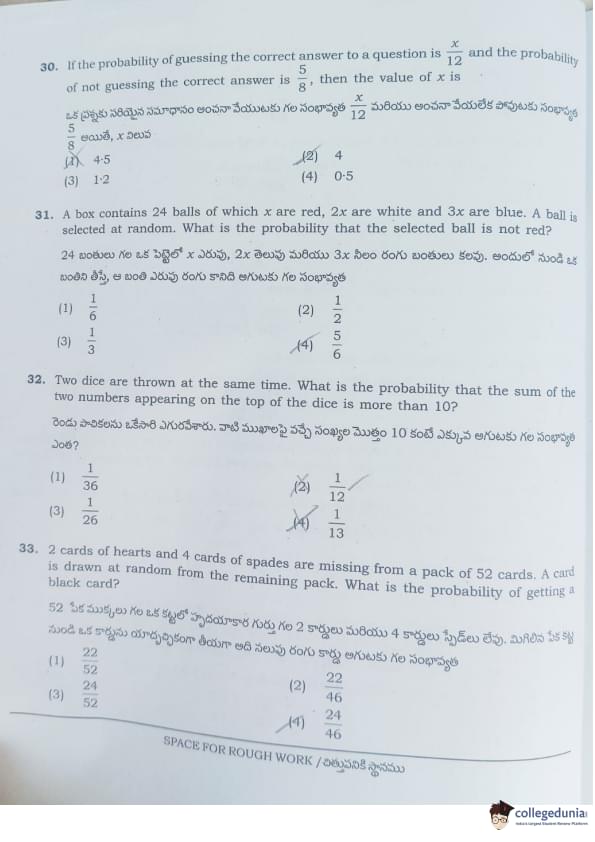
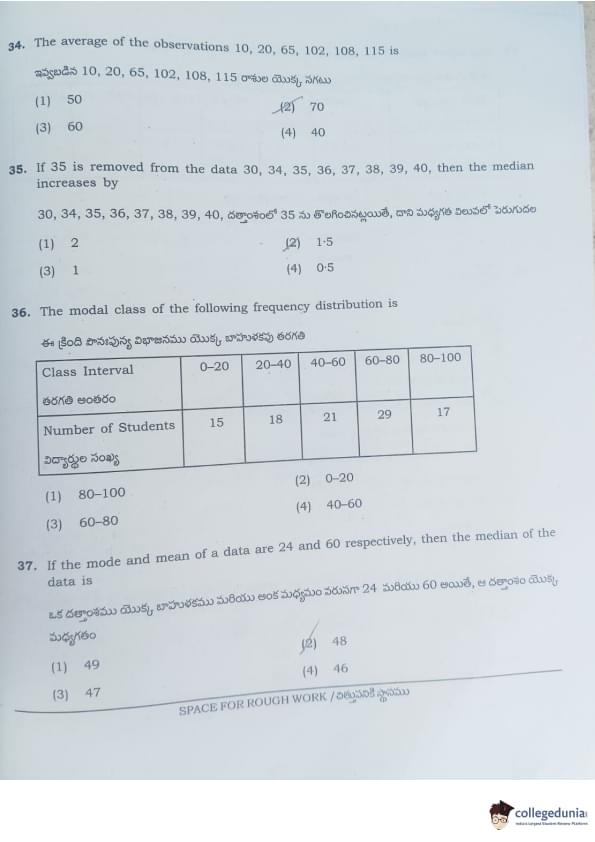
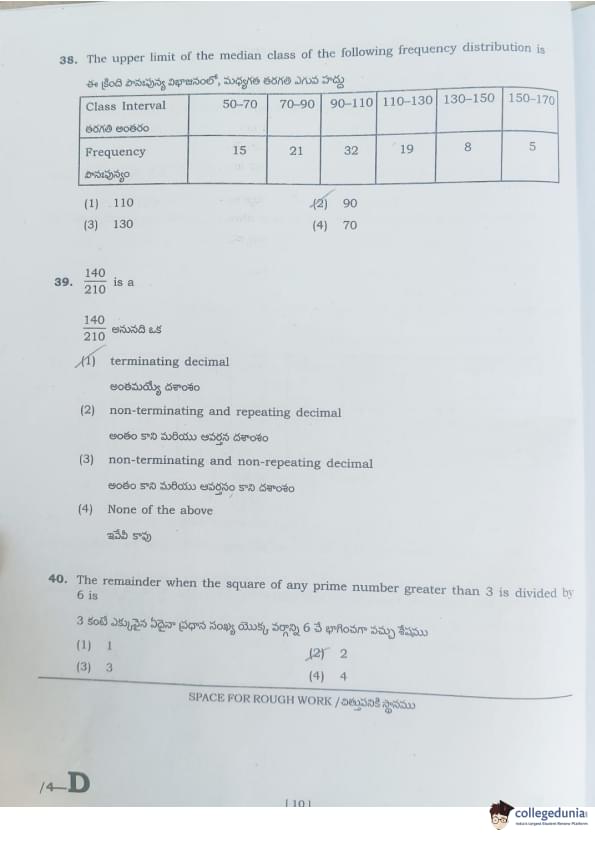


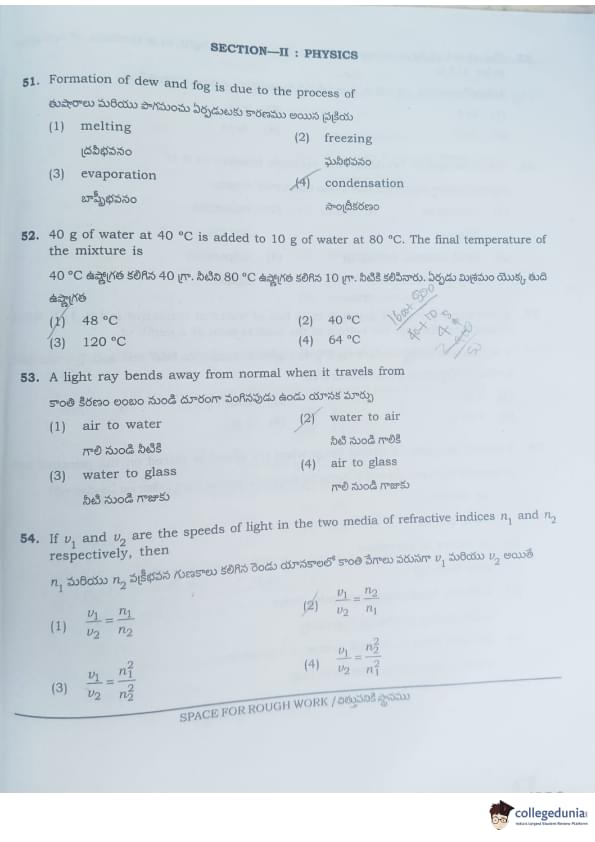
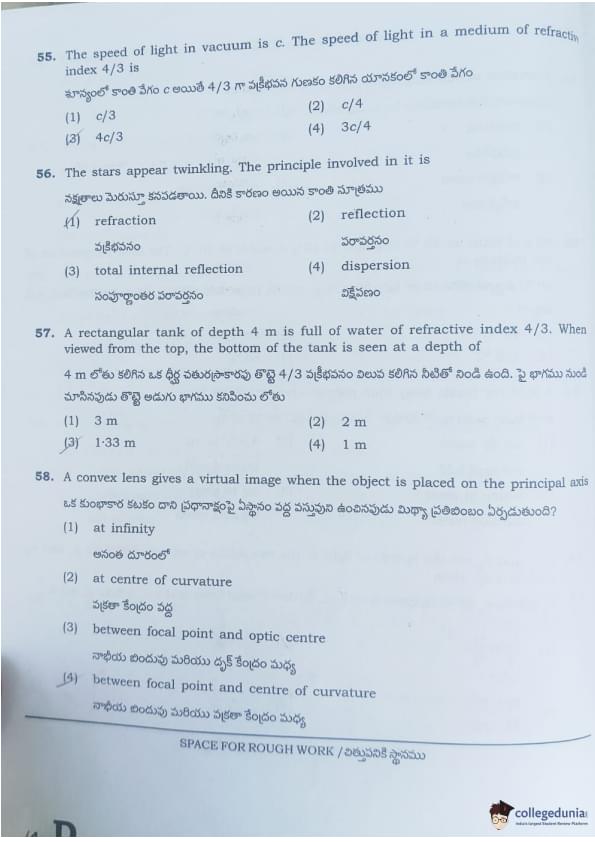
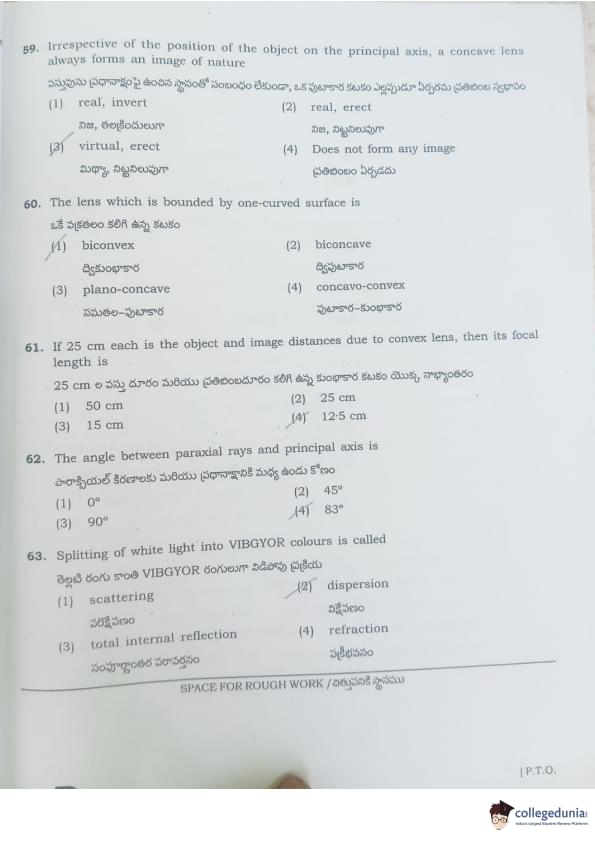
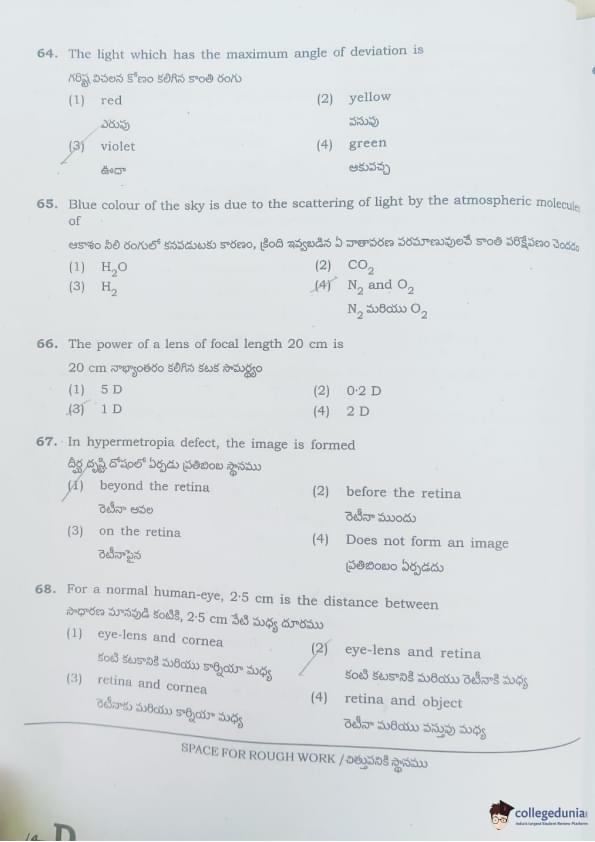
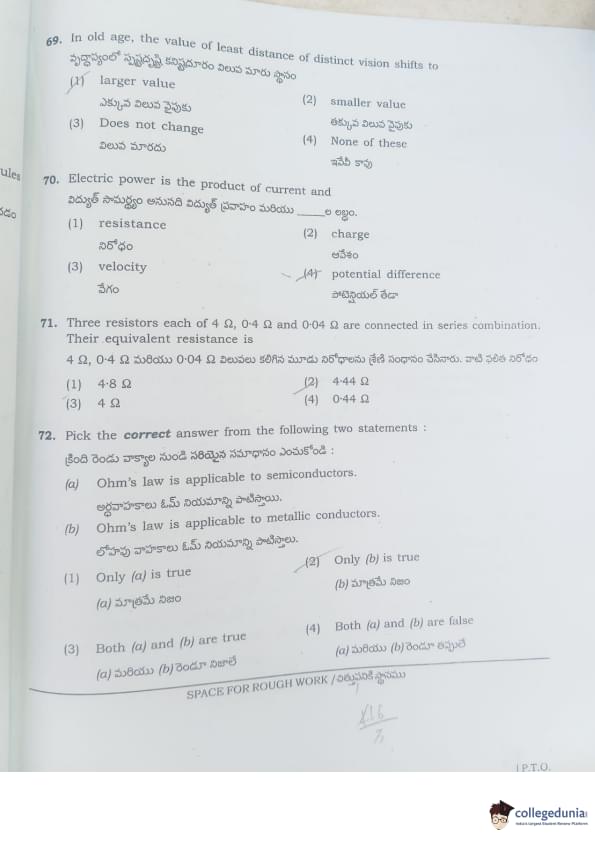
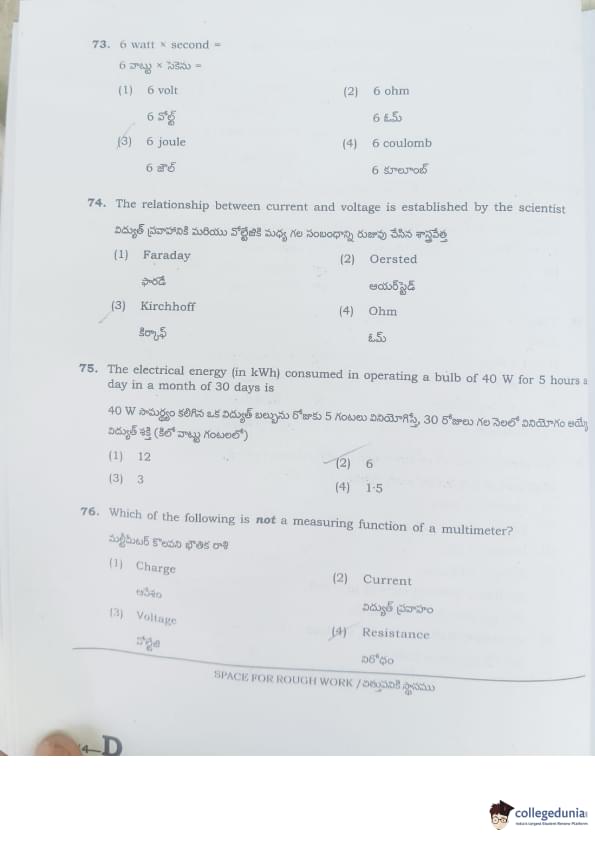
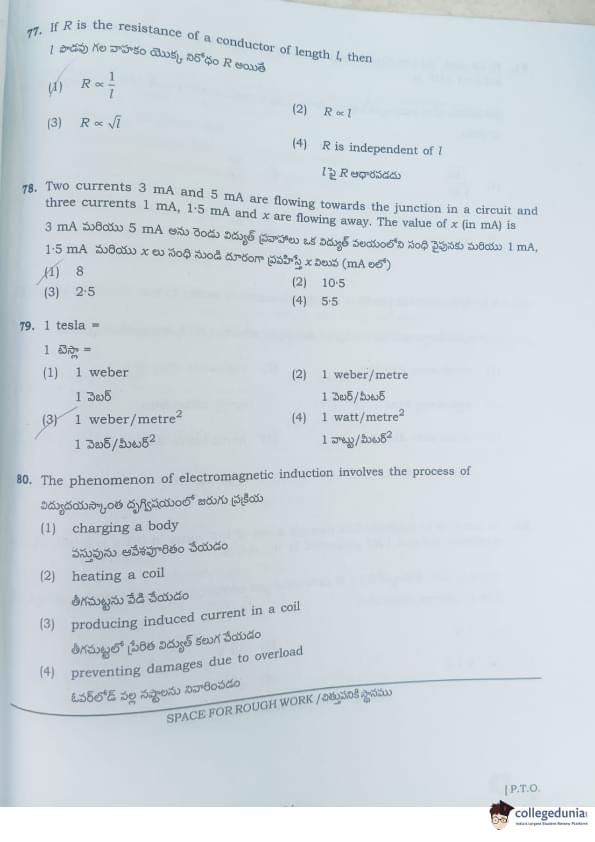

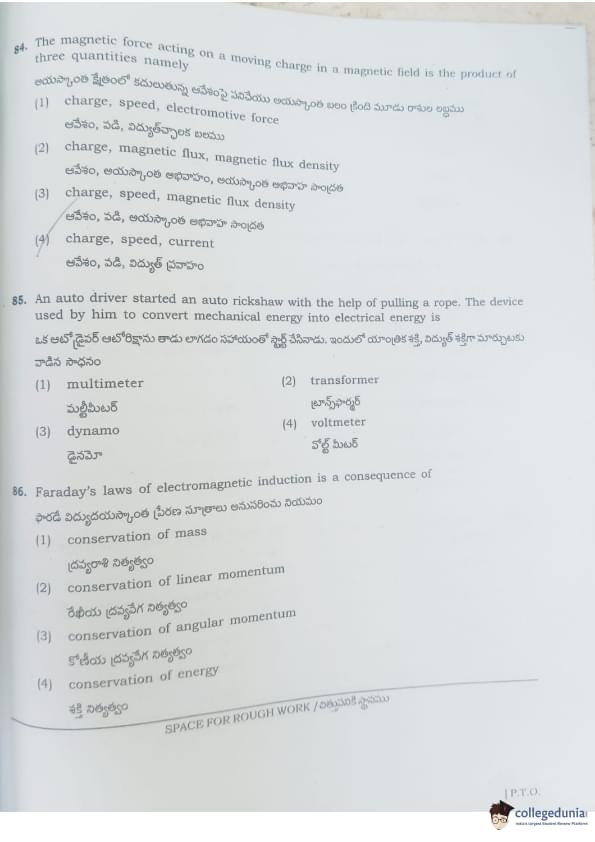
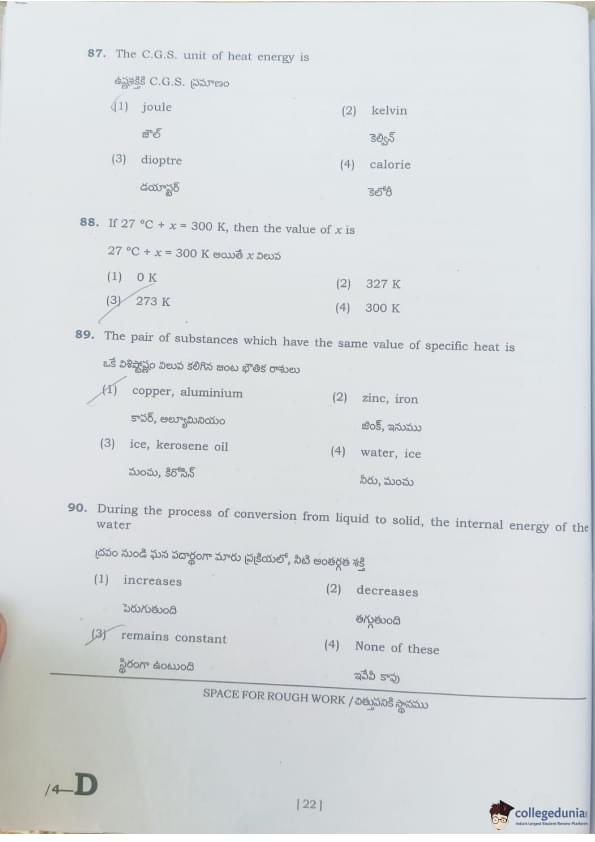
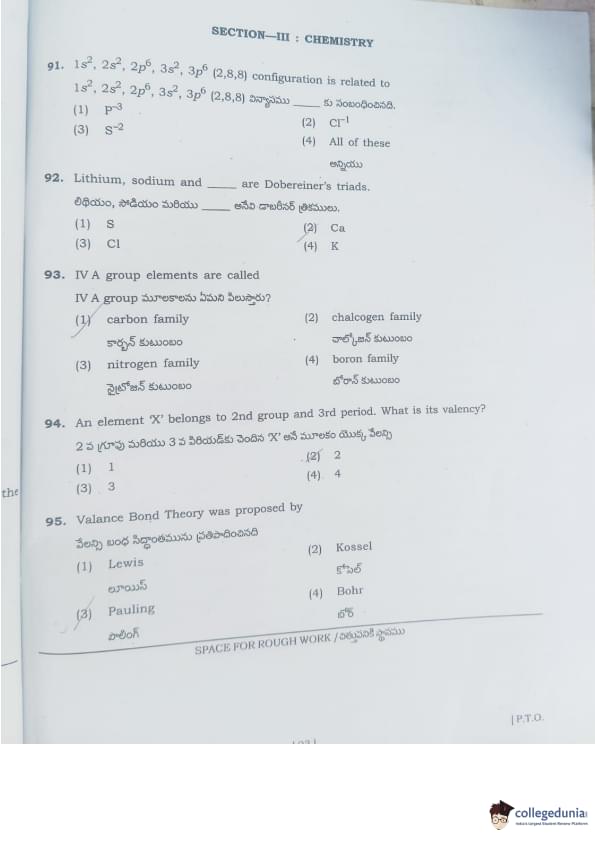
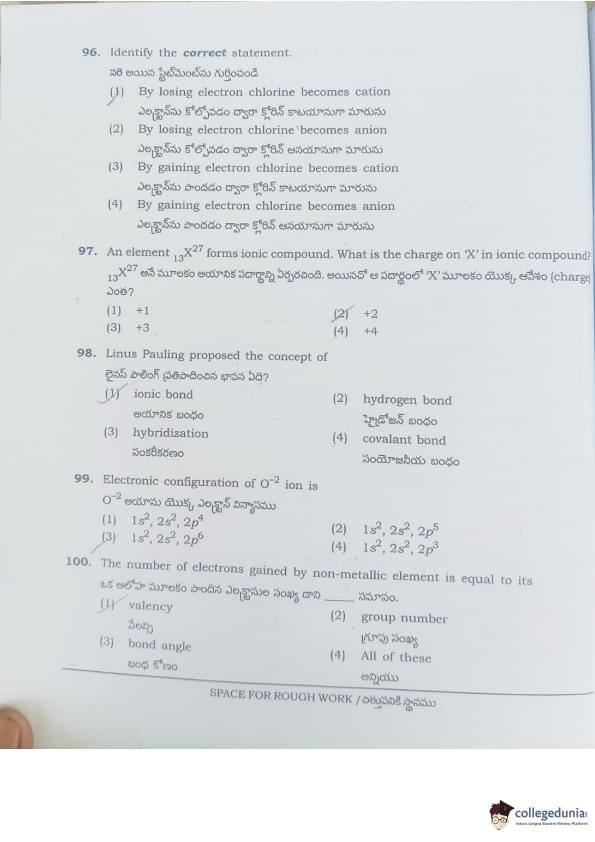
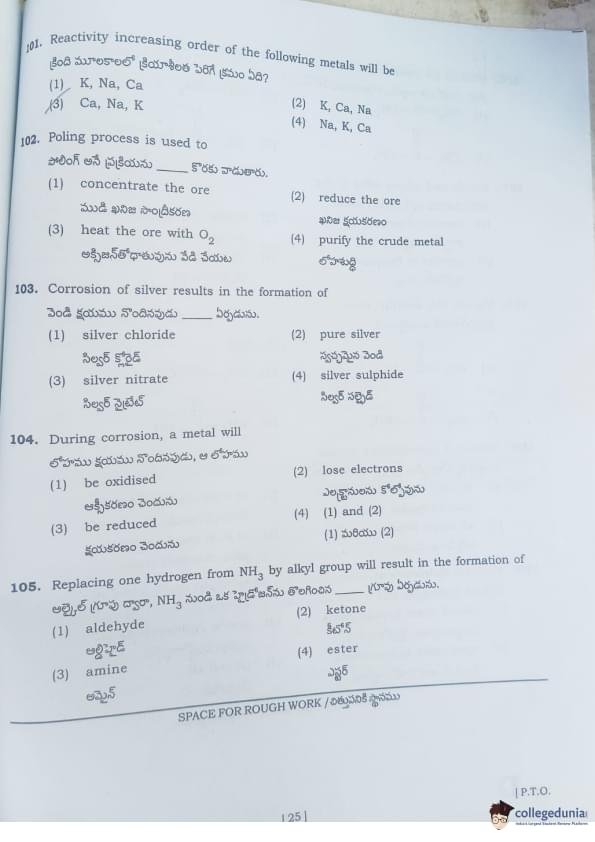
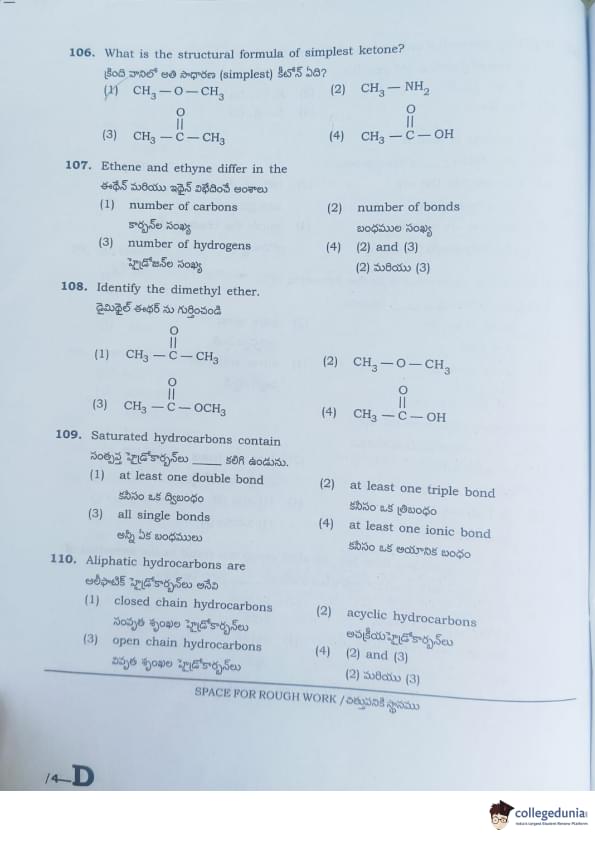
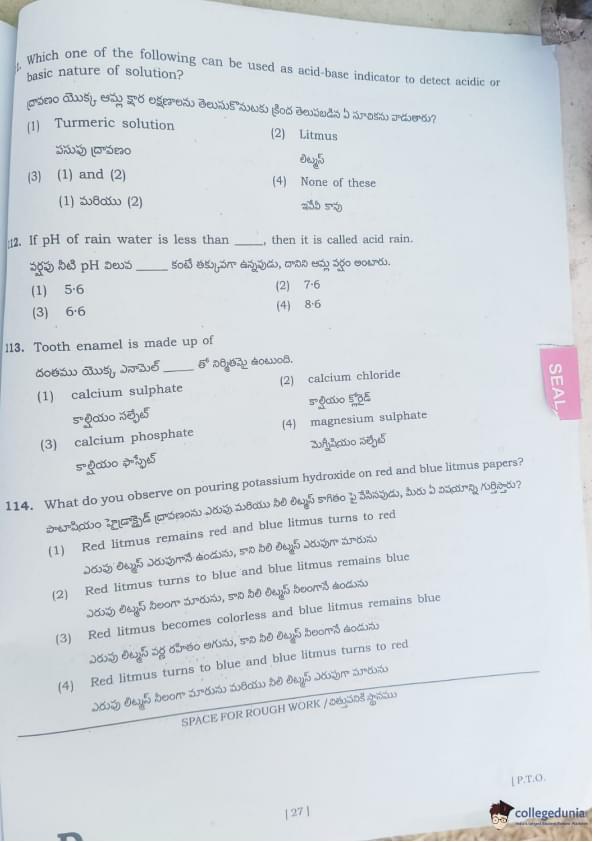
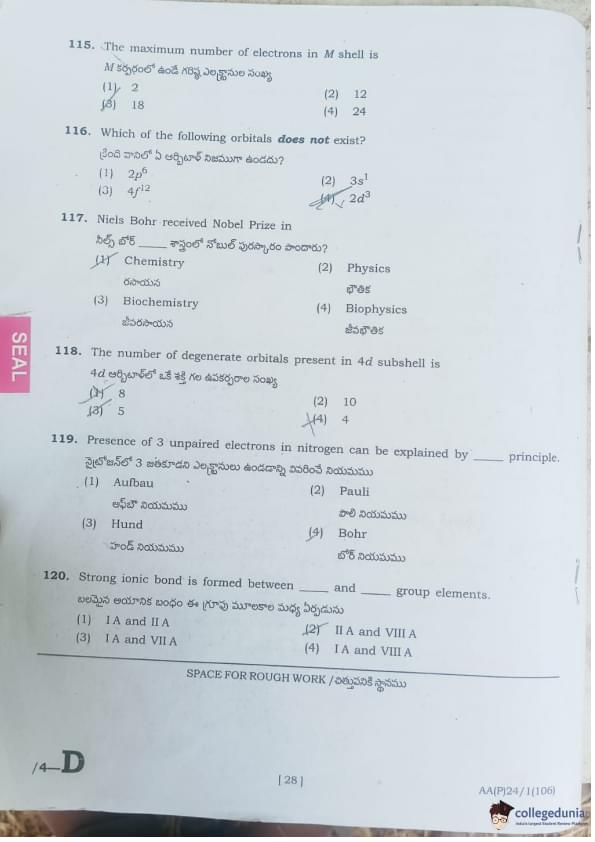
Quick Links:







Comments